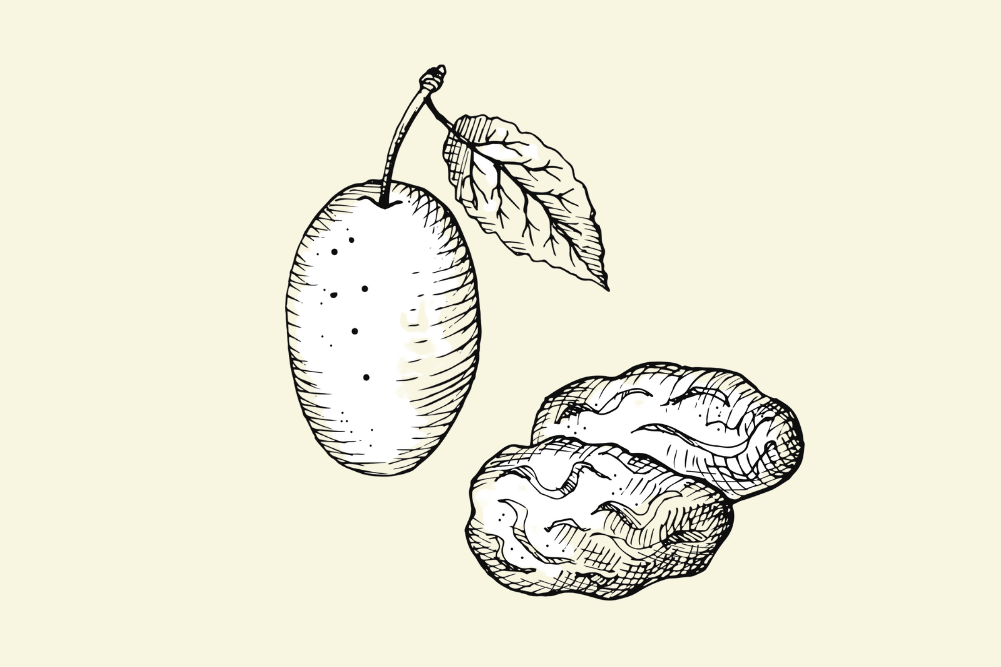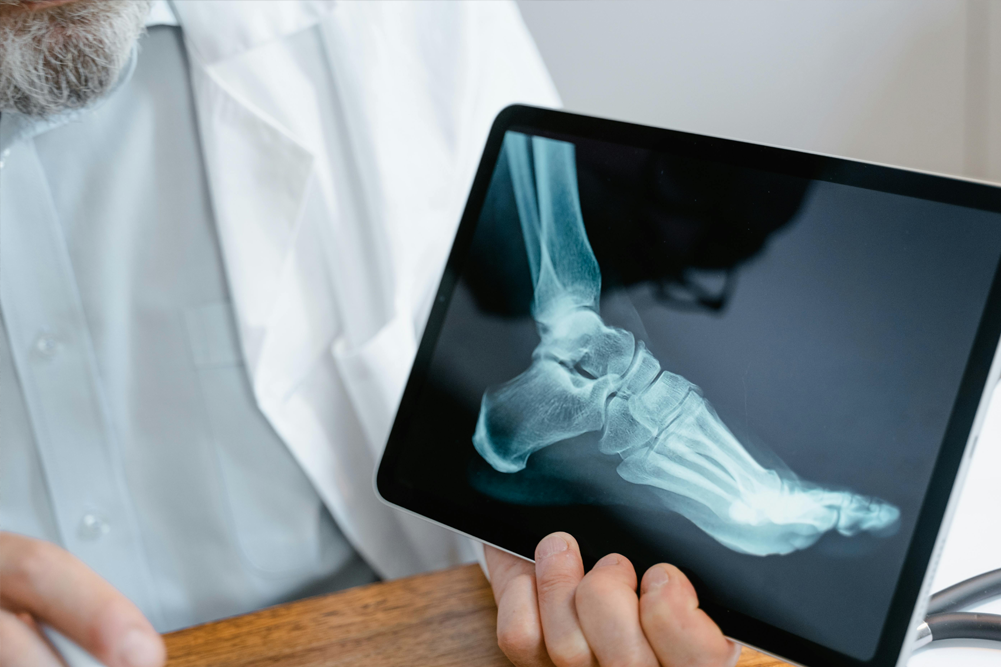5 ways to care for your eyes naturally
Your eyesight is precious and possibly the most important of your five senses. It not only affects how well you see but also how you feel. Your eyesight impacts your ability to work, exercise, drive and even recognise a face. Good vision leads to improved learning and comprehension and overall quality of life.
The World Health Organization estimates that up to 80 per cent of blindness and serious visual loss around the world is avoidable through prevention or treatment. In Australia, approximately 50 per cent of the population has at least one eye problem, rising to 87 per cent of people over the age of 45. Having your eyes regularly tested for vision problems and general eye health can help identify early warning signs and prevent the loss of eyesight.
Eye basics: how they function
Your eyes function much like a camera. Light rays enter through the cornea, the “front window” of the eye, then pass through the lens, which continues to focus the light. Directly behind the cornea is a ring-shaped membrane called the iris and an adjustable circular opening called the pupil. The pupil expands and contracts to control the amount of light entering the eye.
In Australia it’s estimated that about one-third of school leavers have myopia (short-sightedness) and three to four per cent have high myopia.
Muscles hold the lens in place. They pull and flatten the lens to allow us to see objects far away, or contract, thickening the lens so we can see objects closer to us. Messages then pass via the optic nerve to the brain.
Dr Jenny Danks, an ophthalmologist with more than 20 years’ experience, explains: “The brain then makes sense of that information to allow the perception of sight. The commonest ageing process is that the lens gradually increases in size and the proteins within the lens gradually become more rigid.
“As they become less malleable, the eye can’t change focus from distance to near focus. This is called presbyopia and is why people commonly need reading glasses over the age of about 45. That’s a normal ageing process.”
The importance of early detection
Many factors affect our eyesight, including high blood pressure and diabetes. Most eye diseases are a combination of environmental factors and having a family member with eye disease.
Some signs to watch for include distorted vision, double vision, pain in the eye, loss of peripheral (side) vision, halos (coloured circles around lights), bulging of one or both eyes, an unusual red eye or a dark curtain or veil that blocks your vision.
Eye strain from computers is common and taking a few minutes break every 15 minutes allows your eyes to rest.
Ophthalmologists, optometrists and opticians each play an important role in providing eye care but their levels of training and expertise are quite different. An ophthalmologist is a medical doctor who specialises in eye and vision care. As a medical doctor, they have completed a university degree in medicine and around eight years of additional medical training. They are qualified to diagnose and treat all eye diseases, prescribe glasses and are licensed to practice eye surgery.
An optometrist is a healthcare professional who provides primary vision care. This ranges from vision and eye exams, treatment and management of vision changes and medications for certain eye conditions. They can also prescribe and dispense spectacles and contact lenses.
Opticians are technicians trained to design and fit eyeglass lenses and frames, contact lenses and other devices to correct eyesight. They use prescriptions supplied by ophthalmologists and optometrists. They do not test vision or write prescriptions for visual correction and are not permitted to diagnose or treat eye diseases.
Start young
Experts recommend children have their eyes tested around three to four years old, followed by regular testing every two years. Warning signs of vision problems can be if a child complains of sore eyes, has difficulty seeing the blackboard in class or experiences headaches.
“Children should have their eyes checked prior to school entry to make sure they don’t have a lazy eye,” adds Danks. “The parent may detect that their child’s eye may be looking off at an angle with one eye, but this is easily missed.
“A child’s vision is still developing up to the age of about eight or 10 years old so they’re much more amenable to treatment if problems are picked up earlier. Check with your usual GP or optometrist. If they have concerns, they can then arrange a referral to an ophthalmologist.”
What to watch for as you age
In Australia it’s estimated that about one-third of school leavers have myopia (short-sightedness) and three to four per cent have high myopia.
Myopia develops when the eye grows excessively long from front to back. Normally, the lens of the eye focuses the image on the retina, the light-sensitive tissue in the back of the eye. With myopia, the lens focuses the image in front of the retina instead.
High myopia is more likely to lead to serious eye health problems later in life such as cataracts, glaucoma, detached retina and even blindness. Much of the increase in myopia develops in school-age children and recent research has shown beneficial impact from time spent outdoors.
Danks explains: “With respect to the risk of development of myopia, there are inherited factors and environmental factors. In terms of environmental factors, studies have found that it is beneficial to have at least two hours per day outside and that is thought to be related to the amount of a neurotransmitter dopamine which is involved in the growth and development of the eye.
“The size of your eye affects the focus. In general, a myopic eye is a larger eye. In Australia we tend to allow children to play outside each day so the incidence is possibly lower than some European countries — but this could also be genetic.”
Blepharitis is inflammation of the margins of the eyelids. It can occur in children and adults of any age. Cataracts are cloudy areas on the lens of the eye; vision becomes increasingly poor as light passing through the cataract is decreased and scattered. Early symptoms include glare and sensitivity to bright light. Later, as the cataract continues to worsen, haloes may appear around lights.
Retinal detachment means the retina has separated from the underlying tissue and stops functioning. “The symptoms are flashing lights, a shadow in your peripheral vision or a loss of vision and it’s important to seek immediate attention,” says Danks.
Diabetic retinopathy occurs in people with diabetes. Tiny blood vessels in the retina become diseased and damaged. It usually affects the retina slowly but over months or years can cause vision damage.
Floaters and flashes are usually associated with the ageing process and can involve small dark shapes entering the field of vision or small flashes of light. Floaters and flashes are usually just annoying, not harmful. However, the sudden onset of many new floaters or flashes could be a warning of serious eye problems, including tears of the retina or a detached retina.
Glaucoma is the name given to a group of eye diseases that damage the optic nerve that links the retina to the brain. Often, glaucoma is associated with too much pressure inside the eyeball. It is a leading cause of damage to vision or blindness in people over 40 but can affect people of any age. If glaucoma is detected early, treatment can prevent or reduce further vision loss.
Macular degeneration (MD) occurs when the macula, a small area of the retina, is damaged. MD usually affects both eyes but it may produce symptoms in one eye first. If MD continues to its late stages, severe visual impairment can result.
A pterygium is a wedge-shaped growth of thickened tissue that covers the white part of the eye. It can grow to cover the pupil, become red and irritated, cause astigmatism and become uncomfortable. The pterygium may have to be surgically removed.
Astigmatism is a refractive error where the eye does not focus light evenly on the retina. Symptoms can include blurred vision, eye strain, headaches and trouble driving at night. It can usually be corrected with glasses or surgery.
Conjunctivitis is inflammation of the conjunctiva – the moist lining of the eyelids and cornea. It is more exposed to the exterior environment than any other part of the body and therefore open to more micro-organisms than any other membrane in the body. Symptoms of red, irritated eyes that last longer than a few days should be seen by a doctor.
A sty is a bump that forms on or in the lower or upper eyelid as the result of a blocked gland. “There are two types of sties or chalazions,” explains Danks. “The blocked gland leads to a collection of fluid or cyst that can become infected and is generally inflamed. It’s probably more common in children but can occur at any age.
“It does vary with skin type, so some people are more prone than others. Debris on the skin or residual makeup does play a role but it’s not the only factor.”
Herpes simplex is an infection that commonly affects the surface of the cornea, but sometimes it’s more severe and can affect the structures inside the eye. “This can occur at any age,” says Danks. “A lot of disease entities are actually pathological so it’s not universal for everybody to have these problems. Most diseases are a combination of genetic predisposition along with environmental factors.
“A lot of eye diseases are more prevalent with advancing age, so age is a risk factor. Our population is ageing in general so it’s not surprising the number of people affected by these diseases is increasing.
Tips for natural eye care
- Wear a hat and sunglasses when outdoors. Exposure to ultraviolet light over a long period can cause damage to our eyes.
- Wear eye protection when necessary. Fast-moving sports such as fencing or squash have a high risk factor, as do jobs around the home which involve moving parts. “Jobs that involve chemicals such as lime or bleach or moving parts such as whipper-snipping and chainsaws increase your chance of injury,” warns Danks. “The alkaline chemicals are the most dangerous. Chlorine in pools is more an irritation rather than a chemical injury.”
- Quit smoking. Smoking damages not just your lungs but also the blood vessels that supply blood and nutrients to your eyes. “In general, smoking is known to be a major risk factor for a lot of ophthalmic diseases,” says Danks. “Macular degeneration in particular is highly associated with smoking and the more severe end of the disease.”
- Keep your blood sugar, cholesterol and blood pressure at recommended levels.
- Take screen breaks. Eye strain from computers is common and taking a few minutes’ break every 15 minutes allows your eyes to rest. Maintain good upright posture rather than craning your head forward.
- Gentle massage around the eye socket and eye exercises can ease eye strain. For example, dry eyes can result from not blinking as much as we should, especially while using a computer. Try blinking constantly for one minute. Draw figure eights with your eyes, then in circles. Join your two forefingers together about six to eight inches in front of your eyes, shift your focus to the far side of the room, then focus back on your fingers. Turn your head from side to side and up and down while still looking straight ahead. Close your eyes, relax and breathe deeply for 30 seconds.
Diet & nutrition
Following a Mediterranean-style diet that is rich in fresh whole foods will deliver nutrients to your entire body. Think of the colours of the rainbow. Fruit and vegetables that are bright red, yellow, purple and green deliver plenty of antioxidants and carotenoids.
“They’re a class of phytochemicals that are found in peas, broccoli, green beans, eggs and all the leafy greens like kale and spinach,” says naturopath Megan Taslaman.
“Retinal health benefits from omega-3 fatty acids, vitamin C and E and zinc. Carotenoids such as lutein and zeaxanthin are plant pigments that have been shown to protect the retina from oxidative changes caused by ultraviolet light and the good oils of salmon and black currant seed are great ways to boost your Omega-3 intake.
Zinc is highly concentrated in the retina of your eye too,” adds Taslaman, “So top up your diet with small amounts of red meat, nuts, seafood, eggs, yoghurt and legumes.”
The gift of sight is far more than just seeing what is in the world around us: a dramatic sunset or the colours of a rainbow. It also gives us insight, foresight and the ability to enhance relationships through eye contact and communication.
When you look in the mirror each morning, that coloured orb staring back at you is doing far more than you ever thought or realised.








